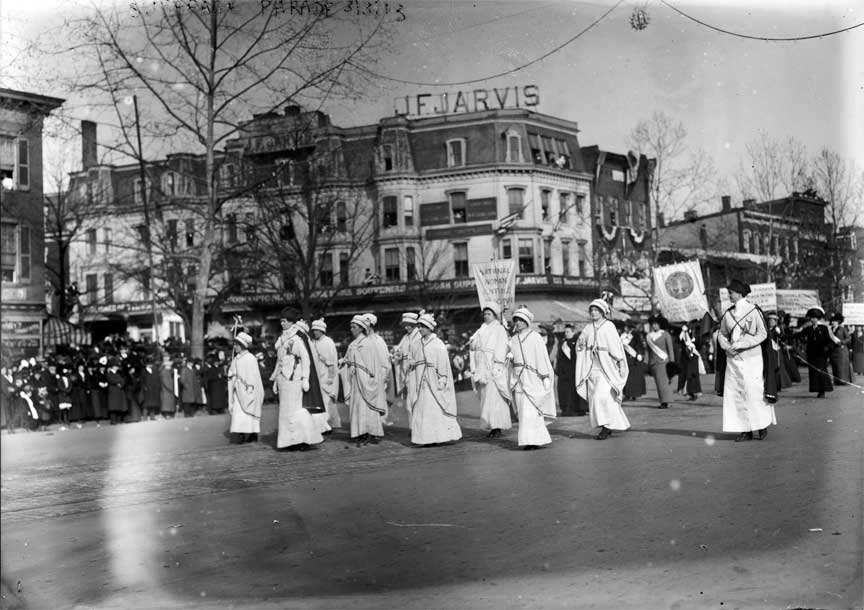Suffragettes March on Washington

Preceding the inauguration of Woodrow Wilson, there was a near riot as 8,000 women marched, demanding the vote for women. Alice Paul and Lucy Burns led the march.
The fight for women suffrage their right to vote had begun at the Seneca Conference in 1848. The organization that was leading the efforts was the National American Suffrage Associations. As more an more women entered the workforce, they redoubled their efforts. The organization that was led Anna Howard Shaw strategy was focused on receiving approval by individual states for women suffrage. The efforts were meeting a modest success and by 1912 six states had granted women the full right to vote, while additional states allowed women to vote in local elections.
Two of the leaders of the movement Alice Paul and Lucy Burns believed the time had come for a more active national strategy. Despite some initial opposition, the N.A.S.A. supported the organizing of a march in Washington the day before the inauguration of President Wilson. Women descended from throughout the United States included a group of 16 who literally walked from New York. One of the potential issues that developed was the march of African American women, and there was an attempt to segregate the marchers, but that did not, in fact, take place.
On March 3, 1913, 8,000 marchers set off down Pennslyvania Avenue. Leading the march was attorney Inez Milholland riding on a white horse. The march began uneventfully with thousands of friendly spectators. However, as the parade moved forward, some spectators became unruly and blocked the path. Scuffles broke out, and Massachusetts and Pennsylvania had to step in to protect the marchers. Over 200 people were injured, but none seriously.
The march was considered a success and put the issue of national suffrage on the American agenda.
 >
>